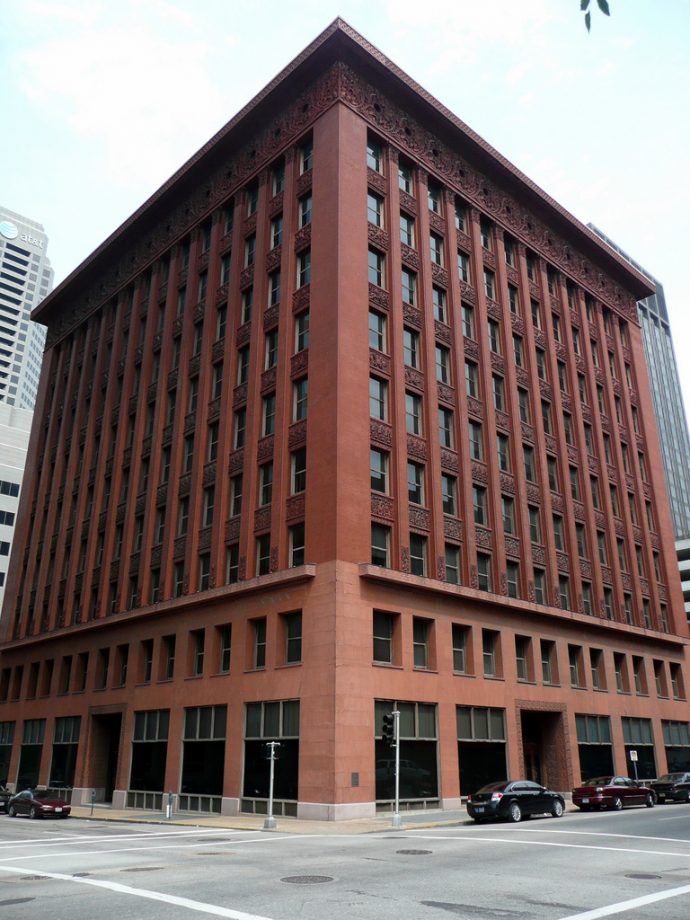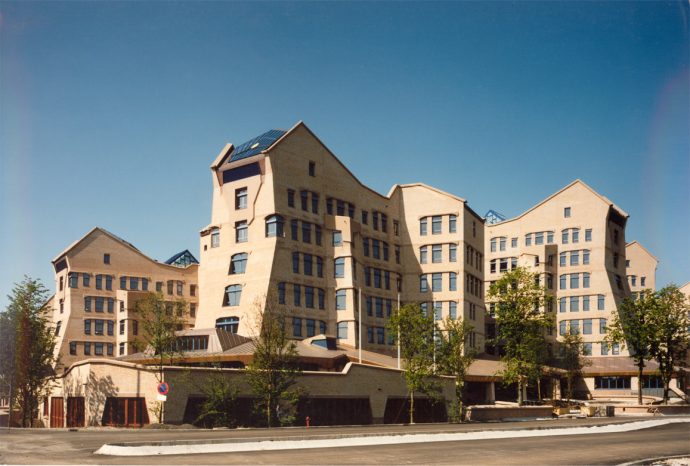Mary Young explores “digital transformation” and how it’s the force driving the next wave of evolution in corporate workspace.
Over the past decade, companies have been opening up their workspaces to allow more interaction and collaboration, banking on the idea that cross-fertilization boosts innovation. The private offices and cube farms of the past have become as passé as the smoking lounge and the secretarial pool.
That’s only the beginning. The corporate workspace is now undergoing the next wave in its evolution. The clear distinction between what’s inside versus outside the organization is blurring. Companies are dismantling some of their exterior walls to allow a freer, back-and-forth flow of people, expertise, and ideas. Formal structure inside organizations is also morphing to enable the company to quickly pivot its business model to capture new opportunities. Agility is paramount. And all of these changes will not only reshape workspace design, they will fundamentally redefine what workspaces are for.
The driving force is “digital transformation.” Perhaps the hottest topic in business today, it’s a concept that’s still fuzzy in many peoples’ minds. Nonetheless, digital transformation is already having a major impact in financial services, professional services, technology and media and is beginning to penetrate most other industries.
What is digital transformation? How does it change how companies operate? And what does this mean for the workspaces of the future?
What Digital Transformation Is—and Isn’t
The biggest misconception is that digital transformation equates to new technologies like mobile, social media, artificial intelligence, and the Internet of Things― technologies that enable a company to do what it’s always done, only faster and more efficiently. But technology, alone, is just one element; it’s what the company does with technology that creates digital transformation.
“The company formerly known as Towers Watson, now Willis Towers Watson, provides professional services in areas such as employee benefits, talent management, rewards, and risk and capital management. Fairly recently, WTW also became a player in usage-based automobile insurance. Usage-based insurance (UBI) uses data about a driver and his or her driving behavior to set an individualized premium price. A driver who works at home and never drives above the speed limit, for example, could get a different rate than someone else who has a long highway commute and speeds frequently.
WTW’s DriveAbility platform incorporates location sensors to collect continuous data about where, when, and how a driver who elects the UBI product takes to the road. WTW pools data from multiple insurance companies, which allows for finer grained analysis. It then sells these insights back to insurers, who can now calibrate premiums based on a deeper understanding of the financial risks, rather than relying on relatively crude measures such as age, gender, and credit score.
In 2016, WTW and a technology start-up called Cambridge Mobile Telematics (CMT) announced a new partnership to jointly develop an enhanced UBI offering. What CMT brought to the deal was smartphone-based technology and automobile sensors sensitive enough to discern whether an individual is a passenger in a car or the driver. What WTW brought was the deep roots of a centuries-old company and a strong brand.”
– Mary B. Young, Digital Transformation: What Is It and Why Does It Matter to Human Capital?, The Conference Board (2016), page 22.
Willis Towers Watson illustrates digital transformation’s profound impacts on a company’s business model. By partnering with a small start-up, the large, long-established Willis Towers Watson gained a new capability (real-time tracking of individuals’ driving patterns). To meet the growing consumer-demand for usage-based automobile insurance, the company leveraged connectedness (via a mobile phone app, in-car sensors, and the Internet of Things) and the avalanche of data they produce, and combined these with its own expertise in risk management. It would have taken WTW too long to build the first two capabilities in-house, but by tapping into its external ecosystem, the company created a new product and services to serve new customers is a new industry.
Reshaping Organizations on the Inside
To compete in the digital economy, large, traditional companies have to operate very differently than in the past: more agile, more engaged with their customers, and more open to suppliers and external talent, partners, networks and communities. To do so, they need a different organizational structure.

The Wainwright Building in St. Louis is a fitting metaphor for the traditional corporate headquarters. It was designed in 1891 by Louis Henry Sullivan, whose skyscrapers and corporate headquarter projects communicated power, prominence, and an unmistakable message of we’re-not-going anywhere. “Form follows function,” a design maxim credited to Sullivan, is embodied by the Wainwright Building. Its form followed the corporate purposes it served: the massing of resources, a clear hierarchy, discrete departments, the control of information flows inside the company, and a well-guarded, external boundary.
This traditional structure, even though it has become somewhat flatter and matrixed over time, will become one of the dinosaurs of digital transformation. It stands for all the wrong things.
- It reinforces the levels and boxes of a formal organizational chart, while digital transformation requires fluidity: cross-functional teams that can come together informally, as needed, to tackle emerging issues or tough old ones and then disband when they’ve served their purpose.
- The traditional power structure (symbolized by higher- and lower status spaces within the office building) defines who interacted with whom and who has access to specific information, while digital transformation calls for transparency (sharing information is more valuable than protecting it) and democratization (anybody can be an innovator; anyone can ask executives tough questions).
- The Wainwright Building’s rectilinear design reinforces the distance between organizational “tops” and “bottoms” and fosters slow, centralized decision-making, while digital transformation is all about agility and speed. To achieve them, executives need to give up a significant amount of power, allowing cross-functional teams to iterate rapidly, learn from their mistakes, and make their own decisions about the best way to satisfy customer demands.
ING Group’s corporate headquarters in Amsterdam might serve as a metaphor for this more fluid structure that digital transformation requires. While the building retains some horizontal and vertical lines, its playfulness seems to gently mock the more rigid contours of the traditional head office. It shouts that new ideas and alternative perspectives are welcomed inside. These values aren’t simply cosmetic. Financial services are being digitally disrupted by new fin-tech start-ups. To compete with online-only banking, established companies like ING must innovate quickly to deliver customer. To do this, ING has embraced an organizational design based on cross-functional squads, tribes, and chapters― a structure borrowed from digital-first companies like Spotify, Google, Zappos and Netflix. The quirkiness of ING headquarters’ exterior, therefore, is a clue to the bold experiments going on inside.

Organizations Look Different from the Outside
If digital transformation changes what companies look like on the inside, it also alters their outside “skin.” In the past, large corporations became successful by building their internal resources (raw materials, talent) and capabilities (work processes, intellectual property). Companies held them close-to-the-chest. They used a variety of mechanisms―security systems, video surveillance, non-disclosure non-compete agreements, patents, contracts, and so on―to prevent them from seeping outside in unintended ways and weakening the company’s strength. Protecting the company’s external boundary served an additional purpose: to make it more difficult for outsiders to penetrate inside the company without its explicit knowledge or permission.
The large corporation of yore was like a heavily-guarded vault, stacked from floor to ceiling with gold bullion. But in the digital economy, the company that relies solely on its internal capabilities and resources―its gold―is another dinosaur-in-the-making. In the past, says Silicon Valley thought leader John Hagel, companies gained competitive advantage through their stock of knowledge. But in the digital economy, he says, they do so by building their connections to knowledge flows. Rather than protecting themselves from outsiders, therefore, organizations must engage with them. The better they are at exchanging data, talent, strategic capabilities, competitive strengths (supplier relationships, reputation, networks of customers), tools, IP, etc., the better they are at seizing new opportunities. In the digital economy, both who you know and what you (and they) know matter.
It’s why Willis Towers Watson supplemented its own capabilities with the technology prowess that it didn’t have, and couldn’t develop quickly enough, to become a player in the usage-based insurance market. It’s why L’Oreal, the world’s largest beauty-product company, built a Bay Area R&D center to tap into the region’s innovation ecosystem. It’s why the German steel company Klöckner moved some employees out of the office to a co-working site so they could hob-nob with talent from small start-ups. And it’s why a global pharma company built its new lab to include extra space for random innovators, on the premise that mixing inside, and outside people might spark new ideas and opportunities.
All of these companies have opened up their external boundary to gain access to their ecosystem. In architectural terms, they are moving from the Wainwright model in which the company is separated from the life on its sidewalks and in its neighborhood, towards a more transparent structure like Philip Johnson’s famous glass house. In fact, they are actually breaking through the glass. Digital transformation calls for organizations that are more like a hybrid of glass walls, which remain barriers to the outside, and a backyard screen house, a temporary structure that allows an ongoing flow of light, air and people.

What Digital Transformation Means for Workspace Design
In many ways, designers can look to co-working spaces such as WeWork and Work Bar, or digital-first start-ups, as models for digital transformation’s impacts on corporate office spaces. Here are some of the functional requirements that workspaces will have to address:
- An ebb and flow of people: Workspace will need to accommodate a shifting mix of occupants: employees, people working remotely, temporary talent, individuals or teams from partner companies, customers, suppliers, and so on. The line between “outsiders” and “insiders” blurs. Talent is where you find it. As a result, the workspace has to meet the needs of both first-time visitors and long-term occupants.
- Fluid structures: Project teams will form around a specific need or challenge and disband when their work is done. Functions and departments will no longer be the workplace equivalent of a home address. Group size and workspace requirements will fluctuate based on the task or stage of the work. Workspace will need to be equally flexible.
- Connectivity: To succeed in the digital economy, companies (as well as individuals, and countries) need to be well connected to flows of knowledge. The workspace will need to foster that connectedness. It must provide the technology, tools, and environment that enable seamless collaboration and knowledge-sharing both inside the organization and also with customers, suppliers, partners and others on the outside. Agile innovations require workspaces spaces that support those activities. Think labs, studios, sandboxes, incubators, hackathons, and pop-ups.
- Democratization: Hierarchy can be a barrier to innovation. It centralizes decision-making and controls who has access to whom and to what kinds of information. Companies that adopt agile methods need to reduce (though not necessarily eliminate) such status-based differences. Leaders need to operate more transparently. Workspace design must reinforce cultural values such as democratization and transparency.
While Sullivan’s Wainwright building was a monument to the company’s solidity, steadfastness and strength, agility is the mantra for the digital economy―not only for companies but for workspace design.
Dr. Mary Young leads The Conference Board’s program of research on digital transformation’s human capital impacts. This article incorporates insights from several recent reports on this topic: Digital Transformation: What Is It and What Does It Mean for Human Capital?; Driving Digital Transformation: Why Organizational Culture and Structure Matter (co-authored with Sherlin Nair); and Driving Digital Transformation: What’s the Role of HR?



Indeed, to succeed with digital transformation journey, large and medium enterprises need to rethink their infrastructure. In fact, it’s should be a part of their digital transformation strategy – building a balanced digital ecosystem in consideration with the company’s goals, customer interests and in-house capabilities. It’s an important part of a larger 5-step digital transformation plan https://goo.gl/LdKkpJ that helps companies on the way to digital innovation.